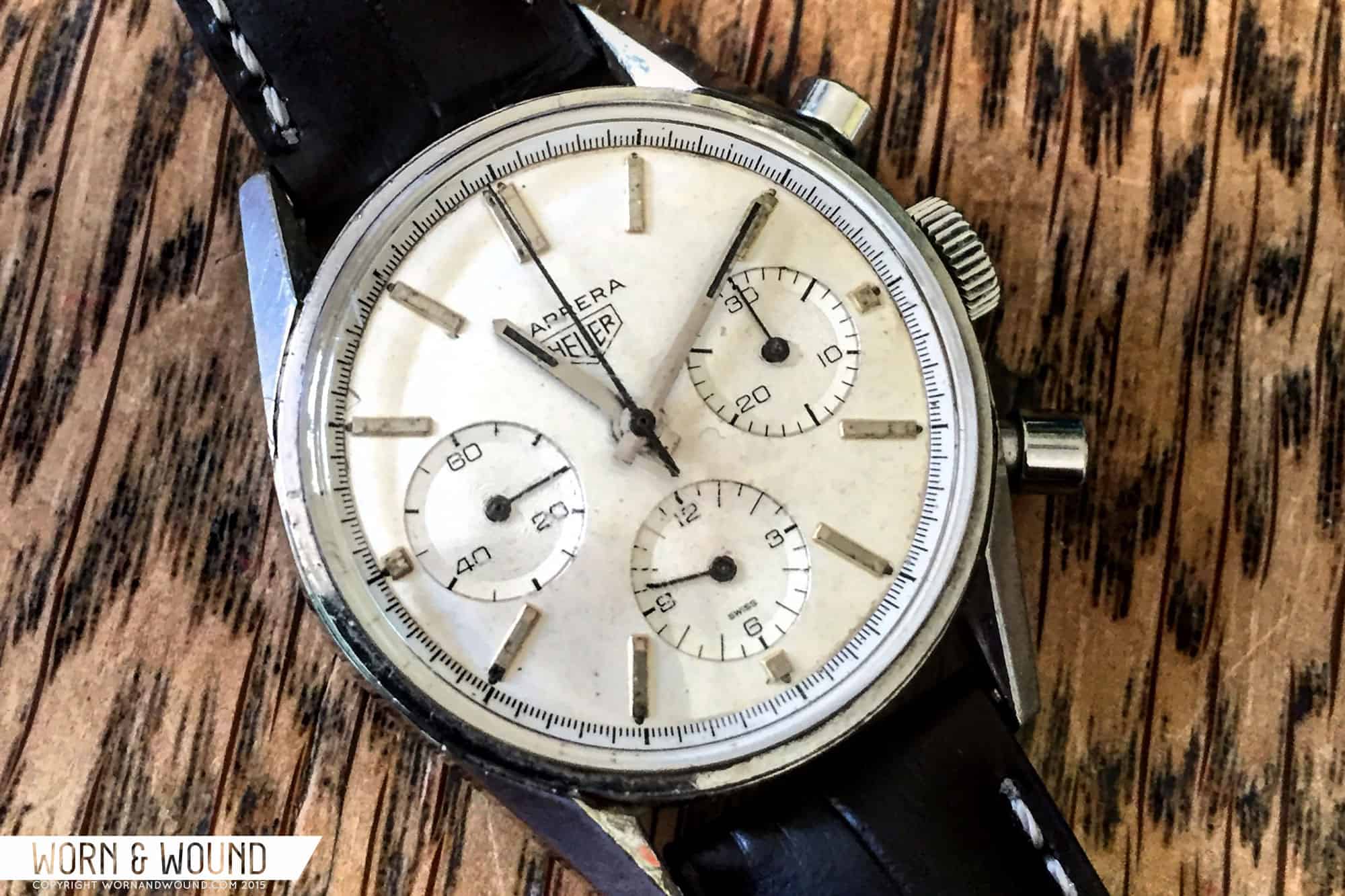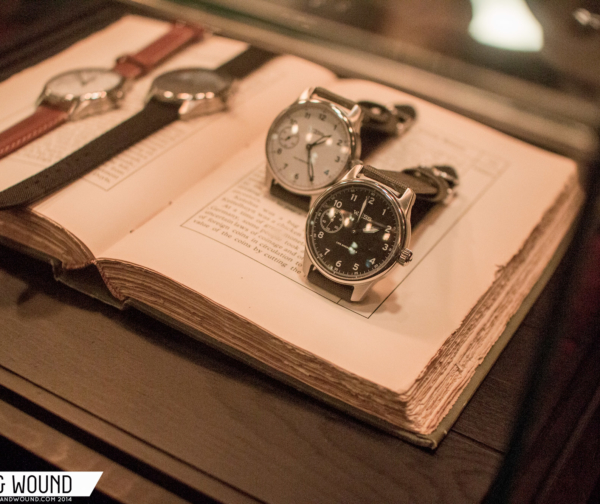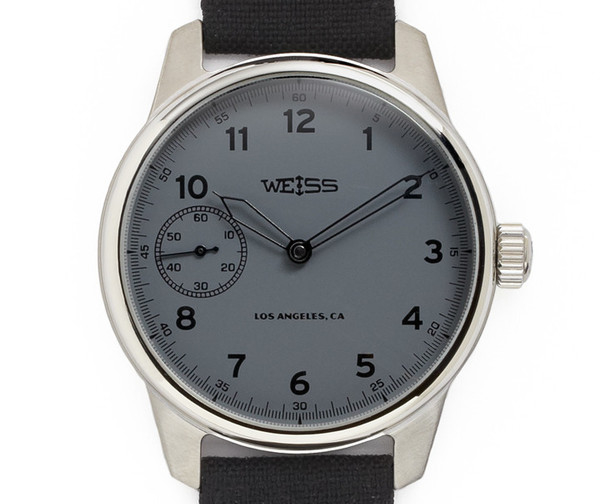They always say ‘never meet your heroes’. The same often applies in Watchworld. That gorgeous IWC Portofino you thought was the pinnacle of refinement and gorgeousness turns out to look like an oversized Christmas chocolate coin on your wrist.
But sometimes it works out.
I’ve had an obsession with anything with an engine since I was old enough to peer under a car bonnet or look into a watch case. The two things have always sublimated into 1960s and ’70s Heuers.
Collecting vintage Heuers is only a slightly slower route to the poorhouse than vintage Ferraris, so I’d always avoided getting behind the wheel and just looked from afar. But covet? Oh yes. Plenty of coveting.
It was always the Carrera 2447S. And an early one at that. The one with the eggshelly, very slightly shiny Singer dial, before the silvered starburst thing hit. The simplicity was what did it for me. None of the rail-crash of telemeter, tachy, range and sliderule dials that you so often see on pre-60s watches. No panda-dial fuss either. Just a neat, minimal tricompax arrangement. Everything you need, nothing you don’t. After all, you don’t need to know the date when you’re 120mph sideways round Eau Rouge.
Having spotted it on the wrists of my heroes McLaren and Rindt, the 2447S was firmly the one I wanted.
I finally got into the ruinous addiction that is vintage Heuers via a Viceroy Autavia that cost me more than my car to service. So I started searching for a 2447S. Not a hope. HOW much?! Every time I looked on the web, when I could even find one, the damn things had gone up again.
But it seems that good things come to those who spend hours trawling the web in thrall to obsession.
Strangely, I wasn’t even looking that day. Just browsing through an obscure UK auction site that specialises in the occasional watch amongst the washing machines and iPads. There, hidden between a couple of Breitling for Blingleys and a nondescript two-tone Datejust was a watch that simply should not have been there.
Described as “Gents Heuer stainless steel automatic Carrera watch. Plexiglass, silver dial and automatic movement”, was a 2447S. From the pictures it had clearly led a tough life too. The reset pusher was a replacement. The dial looked as though someone had trained chickens to skate on it. A couple of gorillas had used the case as a table hockey puck. You could have planted crops in the muck on the caseback. The crown looked like a replacement. And it was an automatic although it couldn’t have been; these all had the Jack Heuer signed Valjoux 72, a manual movement. But I swear it winked at me. “Have faith,” it said in a Mainz accent.
So I gulped, bid. And then I waited, reading up everything I could to convince myself I hadn’t just been astoundingly naive. I frantically hoped someone would outbid me, if only to confirm I wasn’t insane.
A few days later I had an email from the auction house. I’d won the watch. The Heuer Carrera 2447S was mine.
That just made it worse.
A very anxious week passed while I paced up and down, waiting for delivery. But the box finally appeared. In the middle of a tight ball of bubble wrap and parcel tape was a plastic bag containing a very grubby Heuer with an auction tag dangling from its strap buckle.
I’d been wrong. Really very wrong.
It wasn’t the watch that was a state – it was the pictures. The dial was absolutely fine – it was just the plexi (original, I suspected) that was a bit scarred. And it really was the iridescent eggshelI variant I was looking for. The case was, in fact, completely original and not refinished, just dirty. I discovered the crown – that I’d thought was a replacement – was original. I’ve never been so happy being wrong in all my life.
The movement was most certainly not automatic either. There, gleaming and ticking away happily, was the correct signed manual Valjoux 72. And it was beating perfect time. I started looking for a serial number to try and get some sense of the watch’s date. Given the decades of filth on the case, that was more like archaeology than horology. But I eventually scraped enough to see the five figures, starting “537…”. That didn’t tally with any of the research I’d done, so I began asking around…
I discovered that Heuer people are just like other watch people; unfailingly kind and generous with their advice, help and time. A couple of experts from On The Dash dated the watch to 1963 – one of the very first. The date was confirmed by an expert watchmaker too who also undertook to service the watch. Then I noticed that Eric Wind’s 2447S on Hodinkee’s In-Depth article on the Carrera was just five sequential numbers from mine.
The watch is off for service at the end of this month. And when it comes back, it’s getting worn, not reverently put away in a safe and looked at now and then. Watches, like cars, need to be run. All I need to do it find the unicorn-rare reset pusher and I’m sorted.
Sometimes, when you meet your heroes they really do turn out to be a bit magical.









 Featured Videos
Featured Videos












